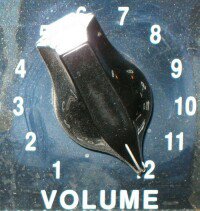
Tax season is a killer...
Anyway, back to March mick-ness.
Michael John ("Mick") Collins (Irish: Mícheál Seán Ó Coileáin; 16 October 1890 – 22 August 1922) was an Irish revolutionary leader, Minister for Finance in the Irish Republic, Director of Intelligence for the IRA, and member of the Irish delegation during the Anglo-Irish Treaty negotiations, both as Chairman of the Provisional Government and Commander-in-Chief of the National Army.
He was shot and killed in August 1922, during the Irish Civil War. Although most Irish political parties recognise his contribution to the foundation of the modern Irish state, members and supporters of the political party Fine Gael hold in particular regard his memory, regarding him as their movement's founding father; the party was originally called Cumann na nGaedhael.
Michael Collins first became known during the Easter Rising in 1916. A skilled organiser of considerable intelligence, he was highly respected in the IRB, so much so that he was made financial adviser to Count Plunkett, father of one of the Rising's organisers, Joseph Mary Plunkett, whose aide-de-camp Collins would become.
When the rising itself took place on Easter Monday, 1916, he fought alongside Patrick Pearse and others in the General Post Office in Dublin. The rising became (as expected by many) a military disaster. While many celebrated the fact that a rising had happened at all, believing in the theory of "blood sacrifice" (namely that the deaths of the rising's leaders would inspire others), Collins railed against what he perceived as its ham-fisted amateurism, notably the seizure of prominent buildings such as the GPO that were impossible to defend, impossible to escape from and difficult to supply. (During the War of Independence he ensured the avoidance of such tactics of "becoming sitting targets", with his soldiers operating as "flying columns" who waged a guerrilla war against the British, suddenly attacking then just as quickly withdrawing, minimising losses and maximising effectiveness.)
By October 1917, through skill and ability, Collins had risen to become a member of the executive of Sinn Féin and director of organisation of the Irish Volunteers; Éamon de Valera was president of both organisations.
Like all senior Sinn Féin members, Michael Collins was nominated to seek a seat in the 1918 general election to elect Irish MPs to the British House of Commons in London. And like the overwhelming majority (many without contests), Collins was elected, becoming MP for Cork South. However, unlike their rivals in the Irish Parliamentary Party, Sinn Féin MPs had announced that they would not take their seats in Westminster, but instead would set up an Irish Parliament in Dublin. That new parliament, called Dáil Éireann (meaning "Assembly of Ireland", see First Dáil) met in the Mansion House, Dublin in January 1919.
Collins in 1919 had a number of roles. In the summer he was elected president of the IRB (and therefore in the doctrine of that organisation making de jure President of the Irish Republic). In September he was made Director of Intelligence of the Irish Republican Army,[2] as the Volunteers had become (the name symbolising the organisation's claim to be the army of the Irish Republic was ratified in January 1919). The Irish War of Independence in effect began on the same day that the First Dáil met in January 1919, when two policemen guarding a consignment of gelignite were shot dead by IRA volunteers acting without orders, in Soloheadbeg, County Tipperary. {See also Dan Breen}.
In 1919, the already busy Collins received yet another responsibility when de Valera appointed him to the Aireacht (ministry) as Minister for Finance.
Collins, however, who produced a Finance Ministry that was able to organise a large bond issue in the form of a "National Loan" to fund the new Irish Republic. Such was Collins' reputation that even Lenin heard about his spectacular national loan, and sent a representative to Dublin to borrow some money from the Irish Republic to help fund the Russian Republic, offering some of the Russian Crown Jewels as collateral. (The jewels remained in a Dublin safe, forgotten by all sides, until the 1930s, when they were found by chance.)
In retrospect, the sheer scale of Collins' workload and his achievements are impressive. From creating a special assassination squad called The Twelve Apostles to kill British agents to the arrangement of an internationally famous "National Loan"; from running the IRA to effectively running the government when de Valera traveled to and remained in the United States for an extended period of time; and managing an arms-smuggling operation; Collins nearly became a one-man revolution.
Collins and Richard Mulcahy were two principal central organisers for the Irish Republican Army, in so far as it was possible to direct the actions of scattered and heavily localised guerrilla units. Collins is often credited with organising the IRA's guerrilla "flying columns" during the war of independence, although to suggest Collins organised this single handedly would be false. He had a prominent part in the formation of the flying columns but the main organiser would have been Dick McKee, later executed by the British in retaliation for Bloody Sunday (1920). In addition, a great deal of IRA activity was carried out on the initiative of local leaders, with tactics and overall strategy developed by Collins or Mulcahy.
By 1920, when he was 30 years old, the British offered a bounty of £10,000 (a vast sum in the 1920s) for information leading to the capture or death of Michael Collins. His fame had so transcended the IRA movement that he was nicknamed "The Big Fellow."
In April 1922, a group of 200 anti-Treaty IRA men occupied the Four Courts in Dublin in defiance of the Provisional government. Collins, who wanted to avoid civil war at all costs, did not attack them until June 1922, when British pressure forced his hand.
This led to the Irish Civil War as fighting broke out in Dublin between the anti-Treaty IRA and the Free State troops. Under Collins' supervision, the Free State rapidly took control of the capital. In July 1922, anti-Treaty forces held the southern province of Munster and several other areas of the country. De Valera and the other anti-Treaty TDs sided with the anti-Treaty IRA. By mid-1922, Collins in effect laid down his responsibilities as Chairman of the Provisional Government to become Commander-in-Chief of the National Army, a formal, structured, uniformed army that formed around the nucleus of the pro-Treaty IRA.
En route through County Cork on 22 August 1922, at the village of Béal na mBláth (Irish, "the Mouth of Flowers"), Collins was killed in an ambush which lasted around 40 minutes, between 7:30 and 8:10 P.M.. Collins was the only fatality in the action.
Michael Collins has gone down in Irish history as one of the great "what might have beens". A man of extraordinary intelligence, incredible passion but most of all a monumental work rate, his loss was a disaster for the nascent Irish state. Despite opposition, he had supported and supplied the IRA in Northern Ireland throughout the civil war, a policy which was quickly discontinued after his death. It is doubtful he would have regarded the findings of the Irish Boundary Commission with the same equanimity as his successors. His loss was made all the more tragic by the death of President Griffith only 10 days before due to stress. One of Collins' last public appearances was marching behind the body of his friend and cabinet colleague. Within one week, Collins joined Griffith in Glasnevin Cemetery in Dublin.






No comments:
Post a Comment